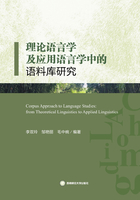
How Are Chinese Idioms Translated? The Intercultural Perspective Towards Goldblatt's Translation of Red Sorghum
Southwestern University of Finance and Economics
Abstract:The new era has witnessed increasing cultural exchange and interaction between different nations. Translation of Chinese literary works, which are carriers of its culture, can greatly promote Chinese culture worldwide. Since idioms are abundant in those works, appropriate translation of the idioms appears to be particularly significant. This study focuses on Howard Goldblatt's Translation of Mo Yan's novel Red Sorghum and analyses the translation strategies of idioms employed by the translator, mainly foreignization and domestication. It was found that Goldblatt utilized domestication for translating 79.48% of the Chinese four-character idioms, with the aim of removing communication barriers for the readers. While for other Chinese idioms such as proverbs, phrases and two-part allegorical saying, Goldblatt employed foreignization more frequently, for the purpose of promoting cultural exchange. Use of these strategies possibly explains why the English version of this novel has a good market overseas and further indicates the need for future translators to pay more attention to such strategic use of foreignization and domestication.
Keywords:Intercultural Communication; Chinese Culture; Foreignization; Domestication
1. Introduction
Cultural exchange is important for the development of any nation in the world. Literary works, including such cultural elements as Chinese idioms, if appropriately translated, can promote cultural exchange among different nations.
1)Cultural exchange
According to Li, Wu and Fu (2018), historically speaking, changing of culture was slow and uninterrupted. However, starting from the twentieth century, culture change has become much faster. Particularly, since the middle and end of the twentieth century, communication and transportation technologies have been advancing rapidly.
History has taught us that cultures of all nations are constantly progressing and improving. Human culture as a whole is the product of exchange and integration of all the nations in the world. It is difficult for a completely isolated culture to survive and develop in a long run. Thus, a culture shall improve itself by integrating some good parts of other cultures. While it is necessary to integrate some good parts of other cultures, a nation shall also promote its own culture in the world. This is true for any nation, including China.
2)Translation of literary works and Chinese idioms
Cultural exchange and integration inevitably involve literary works, which are the carriers of cultures. Literary works contain rich historical experience of a nation, and reflect the culture and mentality of the people. Cultural connotation of the nation is the most essential part and the special value of its literary works.
According to Song and Gao (2013), translation is the bridge of intercultural communication; and translation of excellent Chinese literary works into other languages can have a significant impact on promotion of Chinese culture worldwide and development of its cultural soft power.
Since idioms are abundant in those works, appropriate translation of the idioms appears to be particularly significant. According to Yao (2013), idioms are rich in cultural contents. They are essence of a language. They are usually passed from generation to generation. Idioms are elements of languages condensed with people's long-term efforts in summarizing and polishing their thoughts and concepts. They are rich in cultural contents, simple in form, and can be used from generation to generation. They are a very important part in the system of a language. Therefore, appropriate translation of idioms is of great significance.